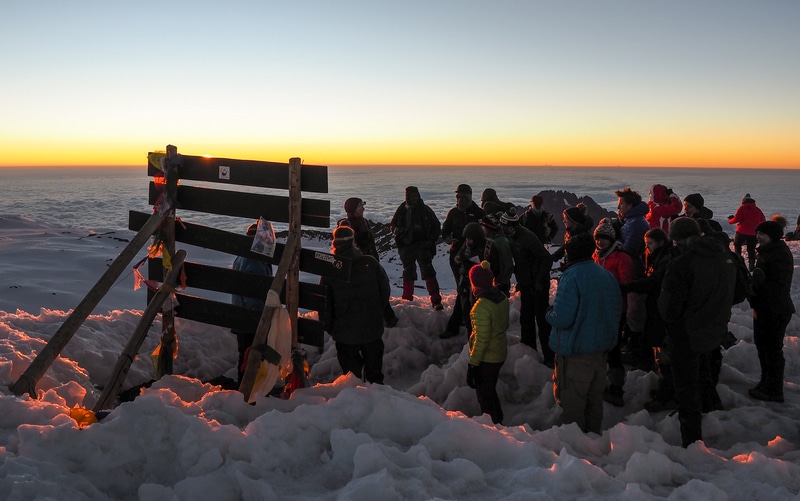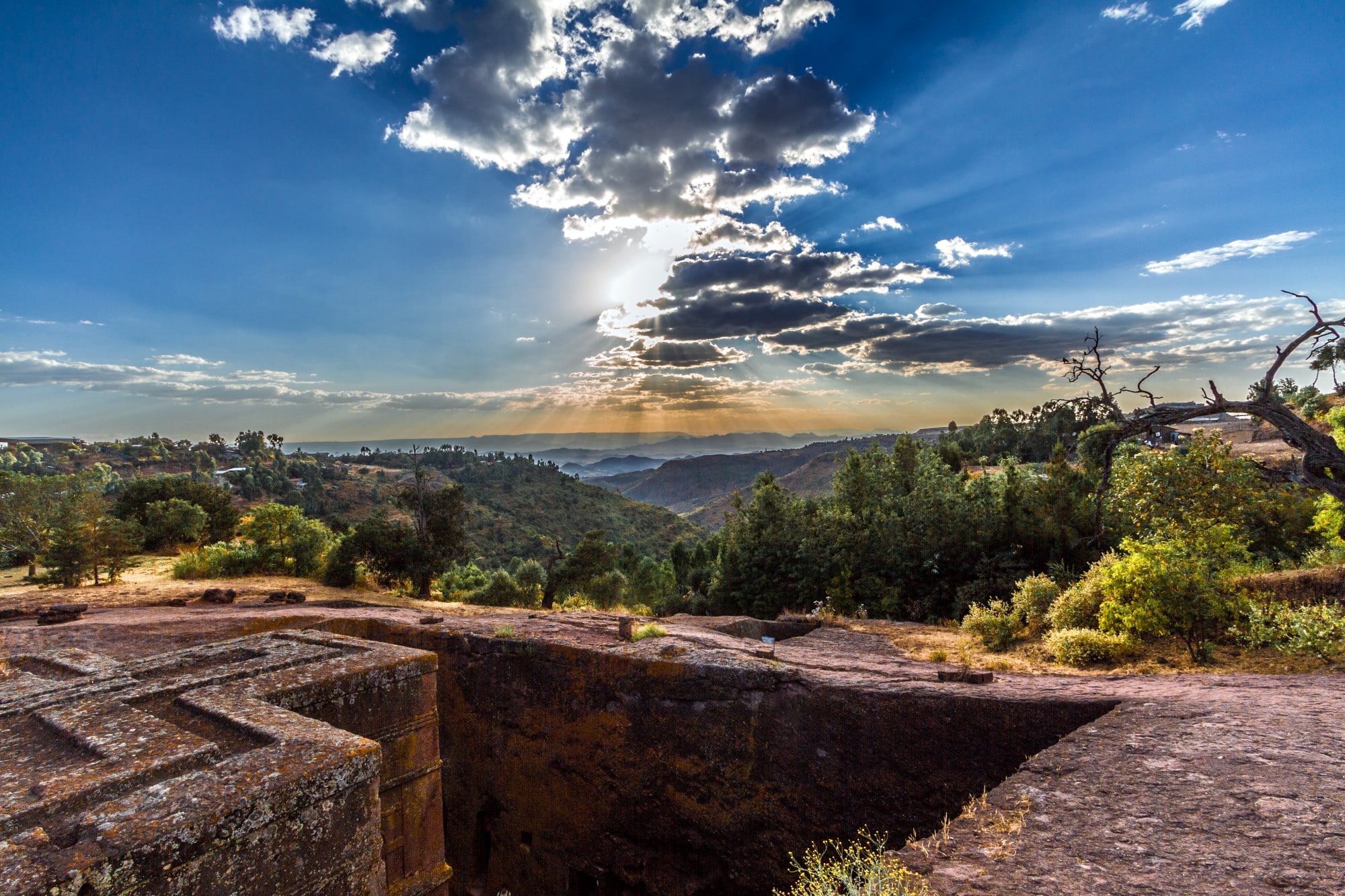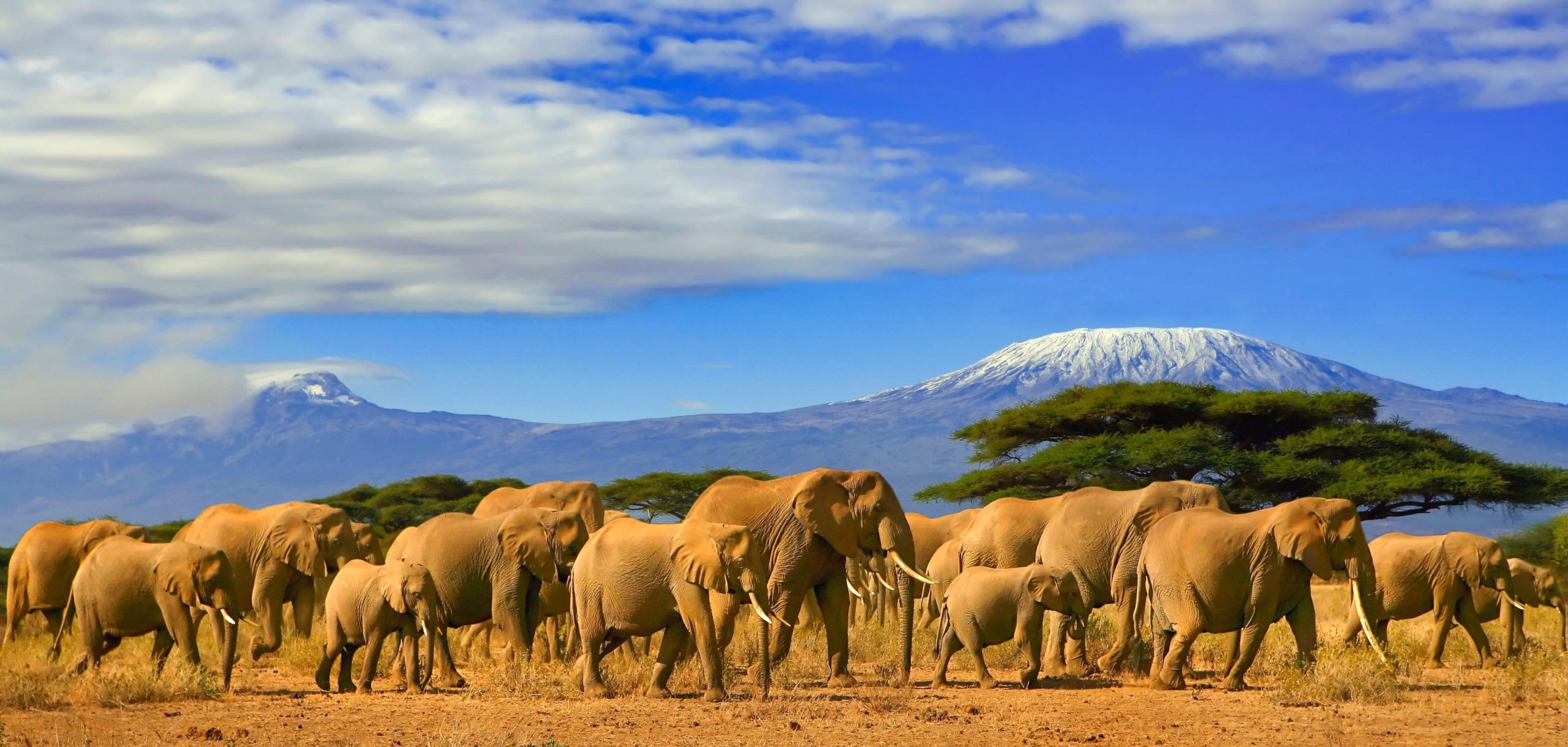
Individuals from around the world completed the Mount Kilimanjaro Climb for Clean Water on behalf of The Water School. The climb raises money for sustainable clean water initiatives in third world countries. Their support will save lives and supply children and families with the tools they need to provide clean water for life! Thanks to contributions to the climb, thousands of people will have clean water for life! One of the best parts is knowing that 100% of the donations will go directly to the field projects in Africa and Haiti. That means each and every cent is going directly towards implementing the Water School Program, which is proven to protect children and families from death due to consumption of contaminated water.
For the climbers, the six-day trek was one of the greatest accomplishments they have ever achieved. I was fortunate enough to be part of this amazing adventure. Below is a brief summary of each day:
 Day One
Day One
All climbers made their way via van and bus ride up the steep road to the Machame gates at the foot of the mountain. We were graciously welcomed to the mountain by our leader Godfrey and assistant guide Robert. These two individuals would lead the way through the fog, rain, hail and ice for the following six days.
Accompanying our group were 64 porters to carry tents, food and luggage up the mountain for the climbers. We all discovered very quickly that these porters had more strength and perseverance than all of us combined!
The “first day” excitement filled the air. All of us registered at the base of the mountain and the skies were sunny and bright. Unfortunately, these conditions quickly changed; by the time everyone was ready to start, droplets began to mark the concrete road that led the way to the mountain’s path. Five minutes into the walk, and no more than 300 meters progress, the African skies opened and the rain poured down. Seven hours later and about 18 kilometers down the path, we arrived at the Machame camp site (2890 Meters high), wet and tired. The rain had passed but new challenges emerged. The porters had set up camp, with over a dozen sleeping tents, dinner tents and cooking tents. The problem was locating your designated duffel bag of clothes and supplies among the mounds of other bags. Sure enough, one duffel bag, which was shared by two of the climbers, had been misplaced and left at the hotel. The two women were quickly outfitted in borrowed clothes and sleeping bags, and arrangements were made to receive their duffel bag the following day. The final climber, whose flight had been delayed, would also be brought to meet us the next day.
There is no doubt that the best part of day one came around seven pm when we were presented with a hot meal of delicious soup and vegetables. After filling up on dinner, Godfrey explained the plans for the following day and checked our pulse rate and oxygen levels to make sure everyone was maintaining good health. We all left dinner exhausted and longing for bed. The drop in temperature was surprising, as it dipped below freezing. This made sleeping very difficult for those who were novices at camping in the cold.
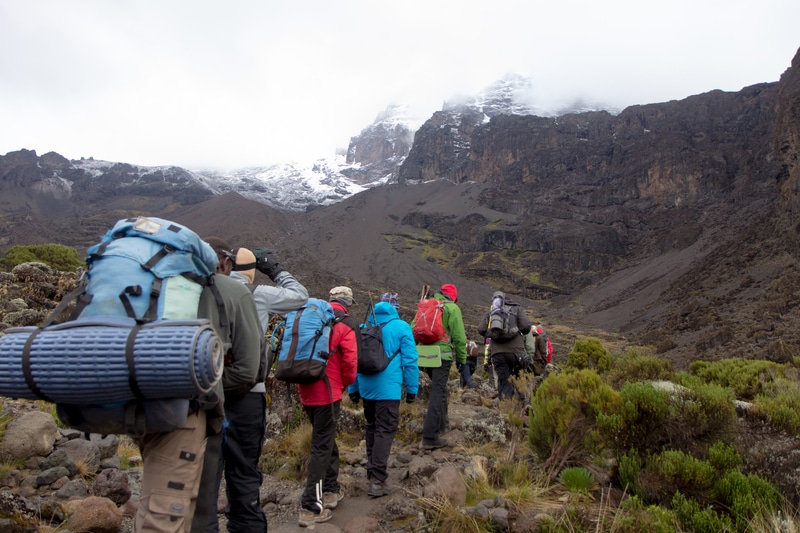 Day Two
Day Two
Everyone woke early and whispers of climbers’ in their tents filled the early morning air. Each tent was greeted by a porter who provided a small basin of warm water for washing and tea and coffee to start the morning off right. Hot breakfast of cream of wheat, eggs, and sausages (hot dogs cut length-wise into quarters) was served. The climbers prepared for the day’s hike, filling day packs with numerous water bottles, protein bars and rain gear.
The climb on day two began to separate into groups, as the individuals who preferred a faster pace lead the way, while those pacing themselves formed their own groups behind. The rainforest disappeared and shrubs and moss-like bushes covered the ground. Half way through the day everyone met for a hot lunch, which had been set up in the middle of an open area, with two large tents put together. The climb continued after lunch, but the sunny skies were soon replaced by dark clouds and the rain began to pour again. Fortunately, it was a shorter day, only 9 kilometers of hiking until Shira camp at 3840 meters high. Although we arrived early having plenty of free time, most climbers opted for a nap before supper. After dinner, fatigue set in and everyone was off to bed after their pulse and oxygen levels had been checked. Temperatures were well below freezing.
Day Three
Climbers were told on day two that day three would be easier. However, climbers had learned to not always take the guides seriously as their perspective of time and difficulty differed greatly from our standard foreigners’ views. Learning to multiply African time by three was essential in order to operate under Western standards. The climb this day was extremely rocky and climbers learned the importance of carefully placing your steps to avoid slipping or rolling an ankle.
The 15-kilometer climb was separated by lunch at the highest point, known as Lava Tower, at over 4600 meters high. We wound around to Barranco camp early evening at 3950 meters. The high climb to Lava Tower helped with acclimatization, allowing the body to adapt to the high altitude by climbing high and sleeping low. This camp was situated in a valley, and oddly enough, climbers were able to find reception for their cell phones if they were standing in just the right position, facing just the right direction, at just the right angle. By day three, some people were showing signs of acute mountain sickness (AMS), and suffered headaches and nausea. A hot supper was well received and worn-out climbers quickly situated themselves inside their tents and slept in the frosty temperatures which surrounded them.
Day Four
The tea and coffee hand-delivered in the morning made waking up in the frigid air a little easier to deal with. Day four would turn out to be a very long and cold day for some. It would also be the day leading to the most important event of the climb – the summit!
The first part of the morning was the most challenging. Climbers would test their skills and agility climbing almost straight up what is known as “the Barranco wall”. The porters that passed didn’t help anyone’s ego as they quickly maneuvered their way up the wall while carrying large bags of supplies on their heads. For some of the porters, they had followed this route hundreds of times. However, for the amateur tourists, this was no easy feat; every step had to be carefully placed and weighted against the rocks, which seemed to stand on a vertical backdrop. Looking down would only make matters worse, since the valley was steep and the bottom appeared many meters away.
The group had joined together by lunch-time to enjoy another hot meal made by the porters. By day four, the soup that the climbers had all once loved on day one was getting to be a little bland. The second half of the trek continued after lunch, but seemed never ending amongst the alpine desert. The trails were winding and steep as they wrapped around the mountainside, going up and down at steep inclines. The 15-kilometer hike took everyone well into the late afternoon to complete. The worst weather conditions came on day four. As the temperatures dropped, the rain that everyone had been used to transformed into ice pellets, which violently cascaded down from the sky.
Arriving to Barafu camp (4550 meters) by early evening, the tents were covered in ice. By the time everyone arrived it was dark and climbers were reminded that they should get as much rest as possible before attempting to summit in the early hours of day five.
Day Five
Being woken in the first hour of day five was shocking to most. The climbers arose from their tents distraught and exhausted from the long day of hiking on day four. Godfrey had informed everyone that the summit attempt would be long and dark. The standard attempt would take about eight hours to reach the summit, Uhuru Peak (5895 meters), and then the descent would take another few hours. There wasn’t much time for breakfast, and instead climbers filled their day packs with protein bars, energy gels and water bottles. Equipped with only day-packs and headlamps, at 2 a.m. climbers began making their way to the summit. Almost immediately the group was separated by pace and two smaller groups formed, each with a guide and a few porters which would stay nearby in case anyone needed assistance. Nausea, vomiting, headaches and exhaustion were all common symptoms of high altitude. At around 17,000 feet, one of the climbers faced severe AMS and was forced to turn around and return to camp.
Slowly the groups made their way up the snowy peak. Zigzagging across the rocks to make it easier on the body, the scene could be compared to watching a movie in slow motion. The lack of oxygen prevents any kind of speed or exertion in a person’s step. Taking breaks every hundred meters is essential in order to catch one’s breath and regroup from the nausea and headaches. The sunrise over Meru peak in the distance was breath-taking and stopped everyone in their tracks for a few minutes. The sunrise meant warmer temperatures were on their way and the heat would help to thaw frozen fingers and toes.
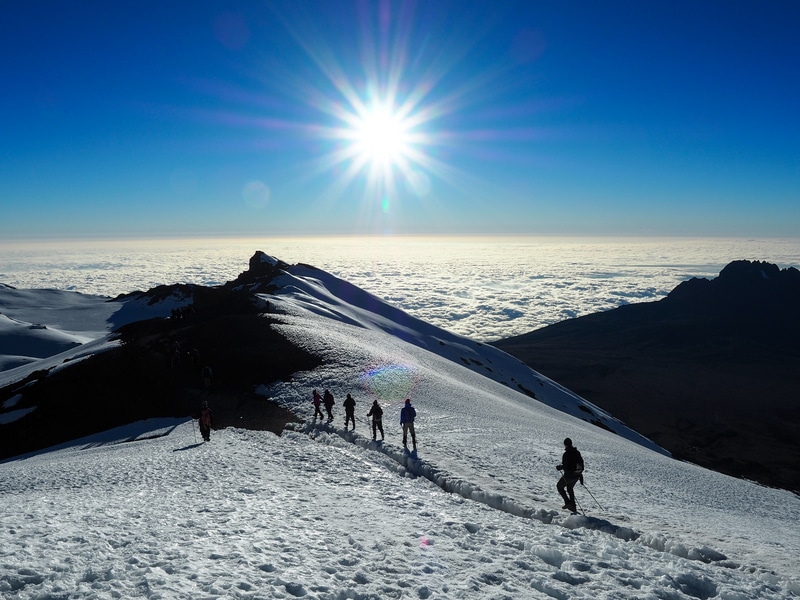 Conquering the summit took pure willpower and determination for everyone. Sure enough, by the time the sun was beaming down on the mountain, the first group of climbers could see the top. However, the group quickly realized that although the top was in sight, the peak, called “Stella’s Point,” would take another hour of climbing. The porters had mentioned that the last leg to the peak would be flat, easy to handle, and not a challenge. However, like African time, African distance is just as distorted and the snowy trek to the peak was even more draining due to the lower oxygen levels. The only thing that kept most people going was the enthusiasm and encouragement from fellow climbers who had just visited the peak and were making their way back down the mountain.
Conquering the summit took pure willpower and determination for everyone. Sure enough, by the time the sun was beaming down on the mountain, the first group of climbers could see the top. However, the group quickly realized that although the top was in sight, the peak, called “Stella’s Point,” would take another hour of climbing. The porters had mentioned that the last leg to the peak would be flat, easy to handle, and not a challenge. However, like African time, African distance is just as distorted and the snowy trek to the peak was even more draining due to the lower oxygen levels. The only thing that kept most people going was the enthusiasm and encouragement from fellow climbers who had just visited the peak and were making their way back down the mountain.
At last, the first team of three, Todd, Mick and me, Emily, reached the peak in an astonishing time of five-and-a-half hours! Victory! This would be just the beginning as the other 23 climbers made the summit in the following hours of the day, and into the afternoon, scattered into groups of two or three.
The sign on the peak explained it all, congratulating us for reaching the highest point in Africa at 5895 meters high! Customary pictures with this sign were taken as proof that a climber had reached the summit. After photos and many hugs with those who had joined the journey to the top, climbers slowly made their way back down. It wasn’t possible to spend much time enjoying your triumph at the peak due to the thin air which caused dizziness and disorientation.
The climb back down seemed almost as difficult and much longer. The daylight hours made the mountain appear like an endless path winding down, and the camp would not be in sight until the last few hundred meters. On the way down from the summit we all realized why climbing in the dark was vital to successfully completing the climb: the darkness hid the daunting height of the mountain forcing climbers to focus only on the steps in front of them.
Once at the bottom, those who had first descended from the summit had time to rest and pack their belongings to move camp down the mountain to a site called “Millennium”. The groups were still scattered, and it wasn’t until part-way through dinner that everyone arrived. The final night on the mountain was quiet and everyone was anxious to begin the final descent the next day and reward themselves with showers and restaurant food.
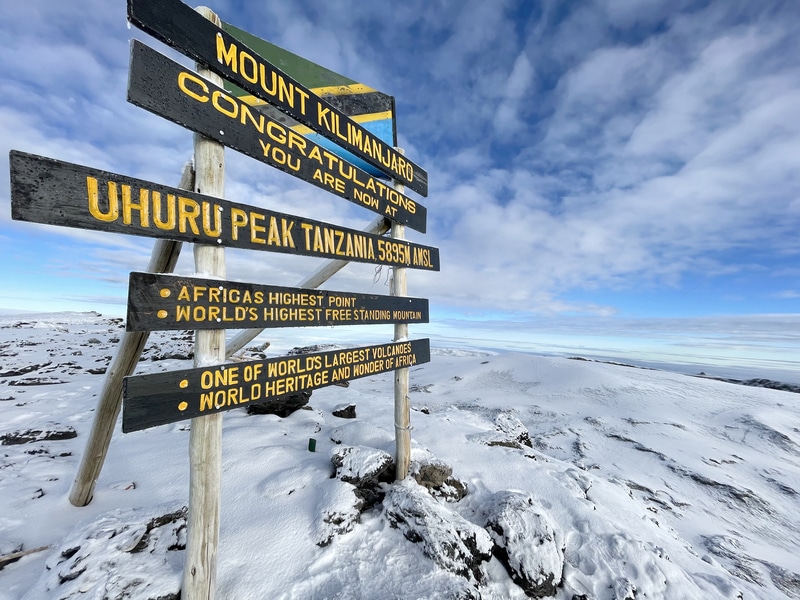 Day Six
Day Six
For almost everyone, the day had started out like any other; packing and breakfast followed by getting ready for the day’s trek. However, for one individual, the last day would be almost as memorable as his summit. Although Gregg had summited successfully the day before, his feet had been so badly damaged by the previous days decent from the mountain that he called for help. The option of getting a helicopter was quickly diminished as the price increased more than ten-fold in a matter of hours! The only other option was a wheelbarrow-like stretcher that he would be affixed to by ropes.
Tied to the stretcher, porters quickly pushed the stretcher down the mountain, jolting and dislodging Gregg to the point that the stretcher almost flipped over several times.
Near the base of the mountain, a jeep was able to pick Gregg up, along with a couple others, and drop them off at their final destination, Mweka.
By this time, most climbers were waiting and the porters and guides said their final farewell with a feast they presented to us.

Speeches were made on behalf of The Water School, congratulating everyone of their success and sponsorships donated towards the Climb for Clean Water.
By early afternoon, everyone headed back to a local hotel in Moshi. Showers began running, drinks began pouring and a long night of celebrating had just begun! Although the climb had physically ended, the event marked the start of many great things to come for the Water School, and most importantly, the thousands of children who will benefit from clean water for life!
